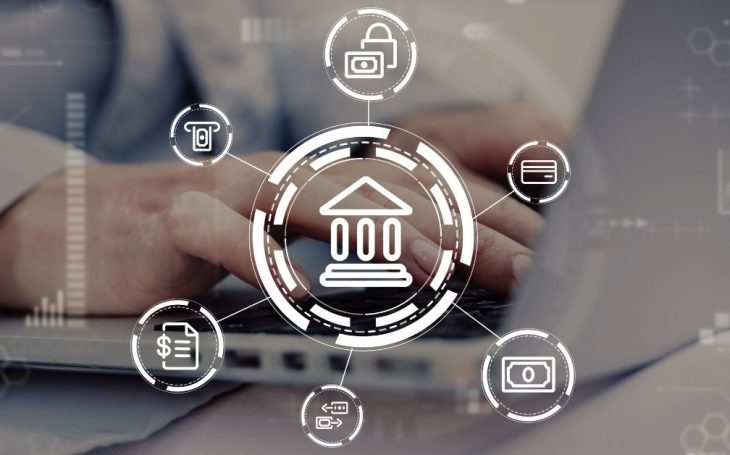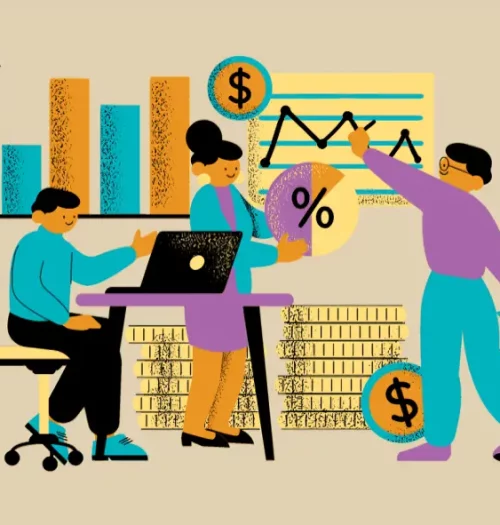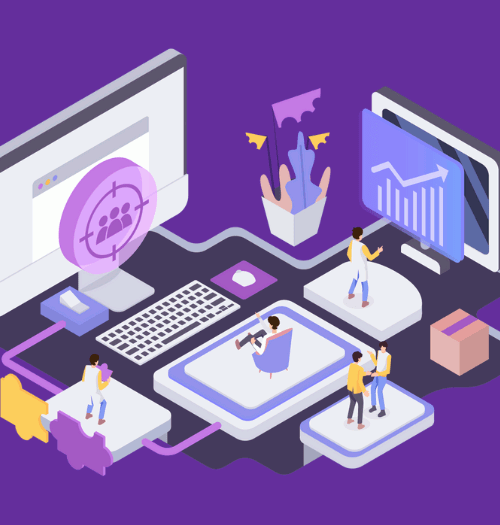


Introduction
Personal loans are un-secured lending not backed by any collateral. But some time to mitigate the risk, bank can ask for guarantee from the third party.
Following sub- products falls under this major category of bank asset product –
- Personal loans
- Revolving credit / Credit Card
- Overdraft
- Buy Now Pay Later (BNPL)
- Short/Medium Personal Term loan
Revolving Credit / Credit Card (RC, CC)
Under this facility, a credit line or limit is provided to the customer. Unlike loan where the entire loan amount is disbursed to the customer and interest rate is charged on the loan amount, the limit can be utilized by the customer as and when required and hence interest is charged only for the amount utilized.
Utilization of the limit can be made in multiple ways viz., Transaction over POS, Online payments via merchant sites, cheque drawing, over ATMs etc.
Repayment of the facility is by way of paying
- Minimum Amount Due (MAD)
- Billed Outstanding
- Current Outstanding
This facility is subject to review and renewal for further period , normally every year.
Overdraft (OD)
This facility is extended by the lending institution as a drawing limit in the operating account viz., Current Account where the customer is allowed to draw over and above their credit balance in their account.
Utilization of the limit can be done in all allowed modes of Current Account. Interest is charged on daily basis for the amount that is overdrawn.
Overdraft facility is also subject to review and renewal, normally every year
Buy Now Pay Later (BNPL)
This loan is provided to those customer segments who wish to purchase household articles. This facility helps the lending institutions to augment their client base which are coming under lower and middle class segment and help expanding their business.
The lending institution enters in to agreement with business firms who has good amount of customer base for their product. Facility is extended to the buyer clients at low interest rates. This facility also helps increasing business volume and expanding their network for the partner entity.
Under this model both customer on-boarding and facility / Loan disbursement is taken care by well defined technology platforms.
This facility is repayable by borrowers over a pre-defined period viz., 6, 12 or 18 months. Repayment is by means of EMIs or by means of standing instruction to collect the EMI from the borrowers account through Debit mandate (ENACH)
Though there are sub products under personal loan category, we deal with personal term loan in this article. This type of loan is sanctioned to customers to meet variety of personal needs repayable over a specified period time in Equated Monthly Instalments (EMIs).
Personal Term Loan
Evolution of Personal Loans
The personal loans, traditionally, were accessible only for the fixed income group of people, especially salaried. The purpose of loan was limited to financing of household articles viz., Radio, Television, Refrigerator, Bi-Cycles, Household articles. Over the period, the spectrum has widened and it has been offered to all class of people right from the Salaried, Professionals, Business people for varied purpose including payment of credit card dues of other banks, top-up loans, marriage loans, loans for home renovation, Travel loan, medical loan etc.
Earlier the financing institutions were reluctant to entertain personal loans due to high-risk and personal loan applications were limited to a small segment of people, who are well known to the lending institution and that too for very limited purpose. Now the situation turned in such a way, that all lending institutions offer pre-approved loans basis the credit score to all categories of customer as stated above.
With the advancement of technology, processing time of the application has been reduced considerably, due to online application processing, digital documentation. Besides, many Fintech companies are in the market to lend personal loan. Thus, the time to avail personal loan at a competitive rate, becomes very fast. In fact, the facility is now available at the touch of a button over websites, mobile apps.
Product Feature
- Fixed repayment over specific tenor repayable in EMIs
- Flexibility to repay in bulk / top-up
- Simple product sanctioned based mostly on personal income and credit score (CIBIL Score).
- Quantum of loan mostly not exceeding 5 lacs
- Unsecured loan
Type of Customer
- Salaried
- Professionals
- Small Business / Retailers
Product Risk Profile
- Since the product is unsecured in nature, there are high possibility for default
- Due to high-risk nature, the interest rate for the product will be higher than the secured loans
- This product portfolio requires more stringent capital adequacy and provisioning norms in case of defaults as per Basel requirements
Security / Terms of Loan
- The personal loans are totally un-secured
- Due to inherent risk involved in the repayment of personal loans, lending institutions prefer to provide this to those clients who are with good take-home income, repayment track record and good credit score (CIBIL Score)
- To mitigate risk, lending institution may ask for third party guarantee / pledge of deposit.
- Lending institution may stipulate pre-condition
- Salary account with lending institution
- Standing instruction to recover EMI from the salary account
- When borrower leave their employer, undertaking from the borrower to recover outstanding from the final settlement from the employer
Sales Channel
These products are offered to clients by lending institutions via
- Branch
- Online
- Direct Selling Agents
- Contact Centres
- Business Partners
Risk Cover / Mitigation
- Additional personal guarantee from third party
- Mandating payroll account opening with the lending institution
- Post dated cheque to cover default and to initiate suit against the borrower
- To reduce the risk of default due to death / accident, the lending institution may offer (by cross selling) insurance products to cover the above risk.
Eligibility Criteria
The quantum of loan that is sanctioned is based on various factors as below:
- Income – take home pay.
- Credit Score
Note: Apart from above, there may be other criteria as specified by the lending institution as per their loan policy
Refer below links
https://cloudbankin.com/loan-origination/why-is-bank-statement-analysis-important-in-los/
Personal Loan Underwriting Policies
Documentation
Following are the documents that are obtained by the lending institution:
- Demand Promissory Note (DPN)
- Loan Repayment Schedule / Instalment Payment Agreement (Loan Agreement)
- Post Dated cheque / Debit Mandate (ENACH)
- Third party Guarantee letter
- Agreement with employer to pay the salary to customer account.
Revenue Model
- Risk adjusted Interest rate on loan, processing fee and charges
- Periodical review of Interest rate, fee and charges
- Special rates during campaign to promote loan product.
Repayment (collection of dues)
The collection of EMI/Outstanding balance can be carried out by the lending institution in one or more of the following:
- Debit to account with them
- Debit mandate (ENACH) by means of standing instruction by borrower
- Post dated cheque
- On / Off line transfer by borrower via on-line banking of lending institution or from other bank accounts
- Direct remittance to the loan account by cash across/cheque the counter
Repayment Types
The borrower can repay / opt for anyone of the below methods of repaying the personal loan:
- Equated Monthly Instalment (EMI) – The most popular method of payment majorly used by lending institutions/borrowers. Under this method, the principal and interest on the principle are calculated in such a way that they are payable in equal instalments for the agreed tenor of the loan
- Fixed EMI – Where the monthly instalment amount remains the same.
- Floating EMI – Also known as Variable Repayment Method, the instalment amount that is to be paid will vary basis the market conditions viz., change in the interest rate
- Fixed Cum Variable – Under this methods, financial institutions offer fixed EMI for a period say for example 3 to 5 years and then switch to floating rate of interest.
In all the above methods, the appropriation towards interest will be more and less for the principal at the beginning. However, the appropriation towards principal will be more than that of interest
- Step-Up or Staggered Payment – Under this method, the initial instalment amount will be less and will be higher after sometime. This method is opted by borrowers when they are not able to pay more now and expect their income to grow in the future.
- Step-Down Payment – This is opposite to Step-Up method where the instalment amount will be high during initial periods and will be lesser later. This type is preferred by those who expect reduction in their earnings viz., the people who are on the verge of retirement.
- Bullet Payment – Under this method, the borrower agrees to make payment to the loan account in bulk over an agreed period viz., every quarter or half-year. This method is offered mostly by business people, professionals who used to get a lump sum amount and would prefer to reduce the cost of loan
Growth of Personal Loans in India
Refer RBI Bulletin on “Dynamics of Credit Growth in the Retail Segment:
Risk and Stability Concerns”
Reserve Bank of India – RBI Bulletin
Accounting
Chart of account:
- Personal Loan Account: Asset: To Book and control loan outstanding
- Overdue personal loan account: asset: To Book and control loan overdue outstanding
- Commission on Personal loan: P&L: to book commission / charges earning on personal loan
- Interest on Personal loan: P&L : to book interest earned on personal loan
Event: Journal Postings
Loan Disbursement
- Dr Personal loan account
- Cr Borrowers SB account or RTGS settlement a/c
Loan Collection
- Dr: Customer A/c / Pool Account (Other bank Transfers/Collections)
- Cr: Personal Loan (Asset)
Loan Overdue
- Overdue Loan (Transfer of Asset):
- Dr: Overdue Loan (Asset)
- Cr: Personal Loan (Asset)
- Overdue Loan (Transfer of Asset):
Collection of Overdue Loan
- Dr: Customer Account / Pool Account (Other bank Transfers/Collections)
- Cr: Overdue Loan (Asset)
Loan Re-scheduling
- Dr: Personal Loan (Asset)
- Cr: Overdue Loan (Asset)
Interest Accrual
- Dr: Interest Receivable
- Cr: Interest Income (P&L)
Interest Recovery
- Dr: Customer Account / Pool Account (Other bank Transfers/Collections)
- Cr: Interest Receivable
Product Life Cycle Stages
Onboarding activities
- Lead generation by Existing and New to bank customers via any of the channel
- Submission of relevant documents
- Application validation/screening for completeness and correctness of data
Underwriting activities
- Underwriting – Check for Credit Score, Credit Bureau check and decide on either approve or reject the application
Disbursement activities
- Documentation execution
- Onboarding and account set up for NTB clients and account set up for ETB clients
- Setting up of standing instruction / direct mandate (ENACH) collection from other banks
- Amount disbursement as per instruction
Loan monitoring activities
- Instalment / Amortization scheduling
- Notification of instalment due to clients
- Overdue follow up with clients
- Recovery proceedings
- Client queries, requests, complaints handling
Parties involved
- DSA, Third party sales agencies
- Applicant / Customer
- Processing office
- Credit approver
- Recovery / collection agent
- Monitoring authorities
Cloudbankin application
Application which supports personal term loan product
Glossary
| Sl No | Term | Definition |
|---|---|---|
| 1 | EMI |
Equated monthly instalments |
| 2 | RC | Revolving credit |
| 3 | CC | Credit Card |
| 4 | POS | Point of sale |
| 5 | ATM | Automated Teller Machine |
| 6 | NTB | New To Bank |
| 7 | ETB | Existing To Bank |
| 8 | DSA | Direct Selling Agent |
Related Post

The Most Popular Credit Rating Agencies in India
A credit rating agency is equipped with all the required

Revolutionizing Credit Underwriting with AI and Data-Driven Approaches
Introduction: Indian Lending Ecosystem and Importance of Data and AIThe

Innovation at its Best: Shaping the Customer Experience in Urban Co-operative Banks
Overview In today’s world, as we navigate through the digital
- Email: [email protected]
- Sales Enquiries: +91 9080996606
- HR Enquiries: +91 9080996576
Quick Links
Resources
© 2025 LightFi India Private Limited. All rights reserved.
(Formerly known as Habile Technologies)